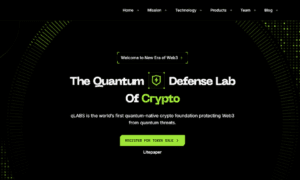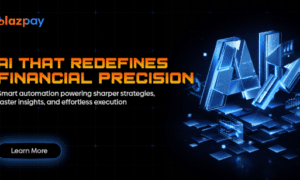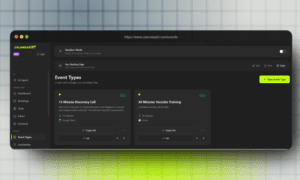Newzful is a new, tightly edited tech publication focused on hands-on engineering, reproducible experiments, and pragmatic strategy. It publishes niche, high-quality articles that help teams make decisions, not just stay entertained.
Why Another Tech Publication Matters in 2025
The web doesn’t suffer from a lack of tech content; it suffers from a lack of signal. Many headlines chase trends; many posts are affiliate-driven; many “explainers” are written far from real code. Engineers and product leaders need something narrower: articles with benchmarks, code, trade-offs, and post-mortems that actually change how they work the next day.
That is the gap Newzful aims to serve—short on fluff, long on depth. Newzful (https://newzful.com/) centers on topics where meaningful progress is happening: web performance and the edge, privacy and security, AI/ML from the engineering angle, 3D/WebGPU and interactive media, and the often-overlooked work of open-source maintainers. Its promise is simple: if it’s on Newzful, it was tested, measured, or deployed somewhere real.
Editorial Principles: Depth Over Volume
Newzful’s editorial approach rests on five principles:
- Evidence over opinion. Every claim should be traceable—through a reproducible repo, a public benchmark, a linkable spec, or a case study from production. If something can’t be verified, it’s labeled clearly as analysis or hypothesis.
- Concrete over abstract. Patterns are useful only when grounded in real constraints. Articles favor specific architectures, code snippets, config diffs, and deployment diagrams.
- Trade-offs, not silver bullets. Performance improves here, complexity rises there. Security hardens here, operational overhead climbs there. Readers deserve the full picture.
- Builder-authored. The best writing often comes from those who shipped the feature, scaled the service, or debugged the outage. Newzful prioritizes practitioners.
- Accessibility without dilution. The writing is clear, jargon is minimized, and definitions are explained—without dumbing down the technical core.
Who Newzful Serves
- Senior engineers and tech leads making tactical choices: which vector DB to trial, which WebGPU features are safe to use, which edge patterns reduce TTFB without wrecking observability.
- Founders and PMs weighing total cost of ownership, compliance, and time-to-market, seeking credible technical context for product decisions.
- Researchers and OSS maintainers who want their work translated into concrete engineering guidance without losing nuance.
Content Pillars
1) Performance at the Edge
Articles that show, with numbers, how to move logic closer to users without breaking the debugging model. Expect topics like cache keys for personalization, cold-start strategies, and measuring the real cost of server components.
2) Privacy and Security in Practice
From threat modeling to consent enforcement, aligning legal requirements with actual implementation. Less “what the law says,” more “how to architect data flows and logging so you can sleep at night.”
3) AI/ML for Product Teams
Not cheerleading. Papers and tools are reviewed from the perspective of integration cost, eval design, latency budgets, and failure modes. Think “prompt injection in multi-tool agents,” “embedding drift in production,” and “cost models for RAG at scale.”
4) 3D/WebGPU and the Immersive Web
Where rendering meets business metrics. Topics include glTF pipelines, texture compression choices, WebGL fallback policies, and how to ship 3D experiences that still pass Core Web Vitals.
5) Open Source: Sustainability and Operations
Deep dives with maintainers on funding, governance, docs debt, and release engineering. Practical advice for companies that rely on—yet underinvest in—OSS.
Article Formats
- Deep Dives: 2,500–4,000 words, complete with diagrams, repos, and benchmarks.
- Teardowns: Dissect a real system (with permission), highlighting decisions that worked—and those that did not.
- Lab Notes: Short, focused experiments with code and raw results.
- Field Guides: Step-by-step playbooks for migrations and patterns (e.g., moving sessions to stateless tokens, adopting edge SSR safely).
- Interviews: Conversations with engineers, designers, and maintainers who carry operational responsibility.
- Post-Mortems: What failed, how it was fixed, and what was learned.
What “Quality” Means Here
Quality is more than grammar. On Newzful it means:
- Reproducibility: Articles include commands, versions, and links. Results can be rerun.
- Transparency: Sponsorships and conflicts are labeled. Vendor content is allowed only if it meets the same evidence bar.
- Maintainability: When specs change or APIs deprecate, updates are issued.
- Editorial Review: Every piece gets a second set of eyes for factual checks and clarity.
- No dark patterns: No clickbait headlines, no “ultimate” or “definitive” claims that the content can’t justify.
Differentiation: What You’ll Find on Newzful That’s Rare Elsewhere
- Benchmarks with caveats. Not just winners, but the data, settings, and scenarios so readers can judge applicability.
- Failure-first narratives. Articles that start from what didn’t work and why.
- Long-tail topics. Niche areas ignored by mainstream outlets—like compositing costs in canvas vs. WebGL, or granular permissioning for data-mesh nodes.
- Cross-disciplinary synthesis. Pieces that connect product design, ethics, and infra, because those boundaries blur in practice.
Example Topics on the Roadmap
- WebGPU in Production: What can be used safely today, including fallbacks to WebGL and the performance trade-offs of compute passes.
- Privacy Beyond Banners: Enforcing consent at the network and storage layers; measuring the cost of compliance.
- AI Evaluations that Matter: Moving past static accuracy to robustness, latency, and cost under real workloads.
- Rendering for Commerce: How texture pipelines and LOD policies affect conversion in 3D showrooms.
- The Unsexy Work of Upgrades: From Node and Python runtimes to database major versions; planning and rollout checklists.
- OSS Bus Factors: Case studies in reducing single-maintainer risk without burning them out.
Contributor Playbook
Newzful welcomes contributions from engineers, researchers, and designers who want to publish work that endures. A typical workflow:
- Pitch: A concise outline with problem statement, audience, why it’s new, and what evidence you’ll provide.
- Draft: Include code, config, or data. Screenshots help; repos are better.
- Review: Editorial passes for clarity and technical accuracy.
- Final: You approve final edits.
- Promotion: Article goes live with a summary for newsletter and social; author bio links to your site or OSS profile.
Syndication: If you want to cross-post, Newzful supports canonical links so search engines credit the original.
For Partners and Brands
Newzful is editorial-first, but partnership is possible when goals align with reader value. That typically looks like:
- Sponsored Deep Dives: A vendor funds time for rigorous testing of a tool or workflow, performed by an independent author or mixed team. Sponsorship buys time, not conclusions.
- Research Reports: Joint surveys or benchmarks whose raw data is published and replicable.
- Open-Source Spotlights: Profiles of projects with clear roadmaps and contribution paths.
- Event Coverage: Engineering summaries from conferences and community meetups—no PR gloss.
Partners gain brand visibility among builders by funding work that engineers actually use. Readers gain artifacts they can cite in design docs.
Distribution and Reach
Newzful keeps distribution simple and durable:
- Website: Clean, fast pages with server-rendered content and accessible markup.
- Newsletter: Periodic summaries with tight curation.
- Feeds: Full-text RSS for those who prefer readers.
- Community: Occasional AMAs and roundtables with authors and maintainers.
The goal is not to flood timelines but to provide bookmarkable resources that teams share internally.
Community Standards
Healthy discourse beats flame wars. Newzful moderates for civility, requires real sources when making technical claims, and encourages respectful disagreement. Anonymous tips are welcomed for post-mortems and investigations, handled confidentially.
Transparency and Ethics
- Attribution: Quotes, diagrams, and repos are credited.
- Disclosure: Sponsored content is marked clearly at the top, and authors declare affiliations.
- Privacy: No invasive tracking; analytics focus on aggregate engagement relevant to editorial decisions.
- Corrections: Errors are amended with visible notes.
What Success Looks Like
Newzful measures itself against outcomes that matter to builders:
- Articles that show up in internal tech RFCs and architecture docs.
- Benchmarks referenced in PRs and issue threads.
- Guides that teams use to de-risk migrations.
- Authors who return to extend a series because readers requested deeper cuts.
How to Get Involved
- Read: Start with recent deep dives and lab notes.
- Pitch: If you have something substantial to say—and evidence to back it—send an outline.
- Partner: If you want to fund work that informs the community, request the sponsorship brief.
- Share: If a piece helped you ship, pass it along to the next engineer.





























